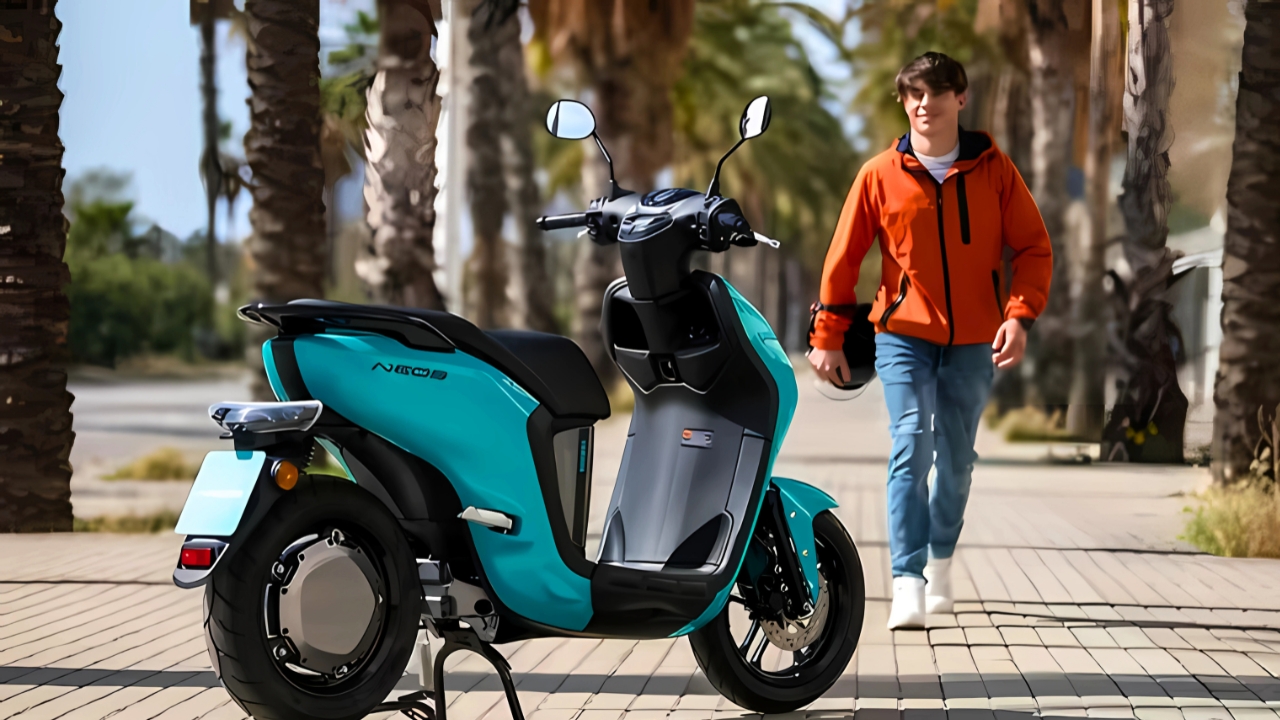Yamaha is finally entering the electric two-wheeler market in India with a brand-new electric scooter that is expected to launch later this year. After dominating the 125cc petrol scooter space with models like the Fascino and Ray ZR, Yamaha is now ready to bring its global EV expertise to Indian roads.
The upcoming Yamaha electric scooter will combine the brand’s reliability, sporty design, and performance with eco-friendly electric technology – all tailored for Indian riders. With this move, Yamaha aims to compete with leading EV brands like Ola, Ather, and TVS in the fast-growing electric segment.
Let’s explore all the important details about this highly awaited electric scooter.
Based on Global Platform, Built for India
Yamaha has already launched several electric scooters in global markets like Japan and Europe, including models such as the Yamaha Neo’s and E01 concept. However, the India-bound scooter will be specially developed for Indian conditions, focusing on range, performance, and affordability.
This new electric scooter will likely be:
- Built on a new EV platform
- Designed to handle Indian roads and weather
- Priced competitively to suit local market needs
The final version is expected to offer a great mix of styling, practicality, and battery efficiency.
Design and Features (Expected)
While Yamaha has not fully revealed the design, based on company hints and EV trends, the new scooter is expected to have:
- Sporty and futuristic styling inspired by Yamaha’s petrol scooters
- LED headlamps and taillamps for modern looks
- Digital instrument cluster with Bluetooth support
- Underseat storage space and lightweight chassis
- Front disc brake and alloy wheels
The scooter will likely carry the DNA of Yamaha’s existing stylish scooters while standing out as a next-gen electric ride.
Battery, Range & Charging (Expected)
Exact battery specs are still under wraps, but Yamaha is expected to deliver practical real-world performance for daily use.
Key Battery Expectations:
- Range: Approx. 80–110 km per charge
- Top speed: Around 60–75 km/h
- Battery Type: Removable or fixed lithium-ion
- Charging Time: 4–6 hours with home charger, possibly fast charging option
This range is perfect for office-goers, students, and daily riders looking for a zero-petrol cost experience.
Advanced Technology & Ride Modes
As seen in other Yamaha models, the electric scooter may feature:
- Multiple ride modes (Eco, Power, Normal)
- Regenerative braking for battery efficiency
- Side stand engine cut-off
- Keyless start and app-based controls (in higher variants)
These smart features will help Yamaha match or exceed what’s offered by rivals like Ather 450X, TVS iQube, and Ola S1 Air.
Production and Launch Timeline
The production is expected to take place at Yamaha’s factory in India, ensuring local manufacturing for better pricing and availability. The brand has already tested the scooter in secret, and now all eyes are on the official unveiling, which is expected in the second half of 2025.
Test rides and dealer previews may begin a few weeks before the full market launch.
Pricing Expectation
Yamaha is likely to position the scooter in the ₹1 lakh to ₹1.30 lakh range (ex-showroom), depending on the variant and features. This puts it in the sweet spot for value-conscious electric buyers looking for a trusted brand and durable build.
Rivals in the Segment
The Yamaha electric scooter will go head-to-head with:
- TVS iQube
- Ola S1 Air and S1X
- Ather 450S
- Bajaj Chetak
But Yamaha has a strong brand recall, trusted service network, and reputation for long-lasting quality – giving it a solid advantage in building consumer trust in the EV space.
Final Thoughts: Yamaha’s EV Journey Begins
The launch of Yamaha’s electric scooter in India is a major turning point for the brand. With its focus on performance, smart design, and value-for-money features, the upcoming model is expected to make a serious impact in the EV two-wheeler market.
If you’re planning to switch to an electric scooter in 2025 and want a brand known for reliability and rider experience, Yamaha’s first EV is definitely worth waiting for.


